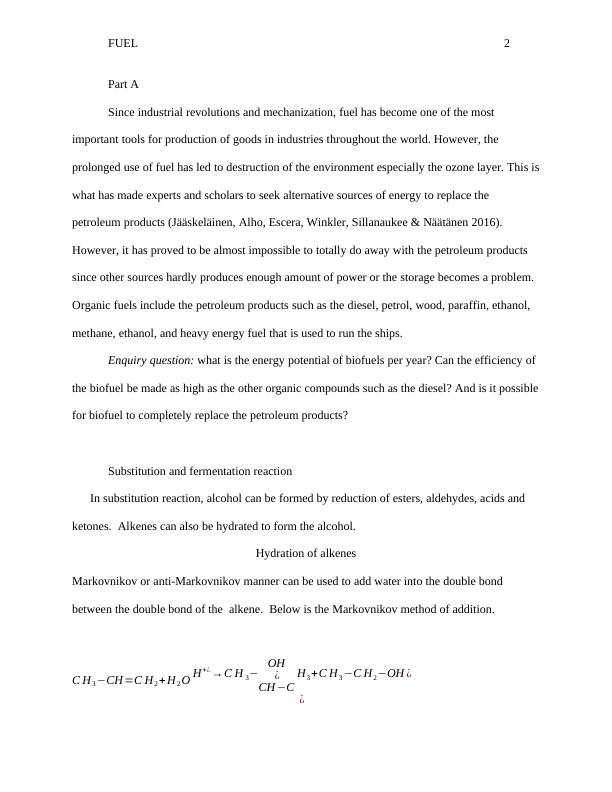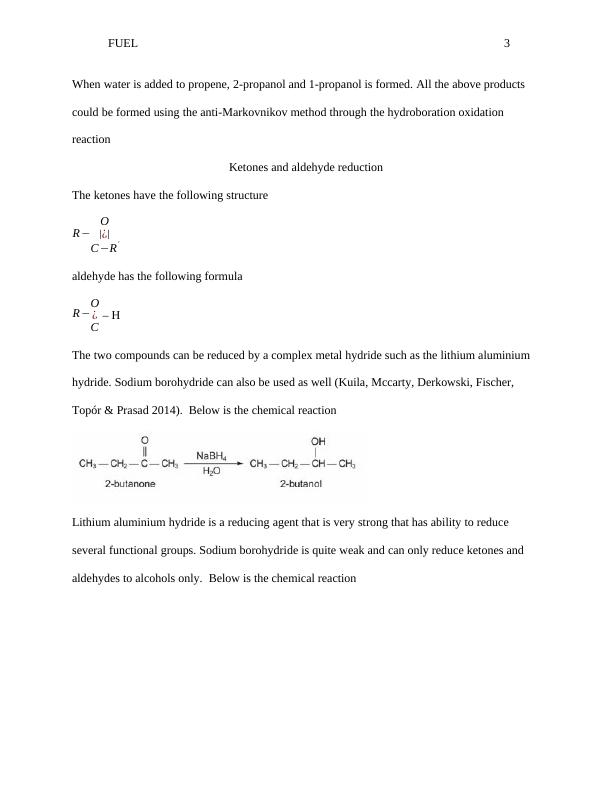Fuel: Organic Fuels and Biofuels
8 Pages1341 Words360 Views
Added on 2022-12-09
About This Document
This document provides information about organic fuels and biofuels, their advantages and disadvantages, and their potential to replace petroleum products. It discusses substitution and fermentation reactions, alcohol reactions, and various processes involved in the production and use of biofuels. The document also compares organic fuels and biofuels, highlighting their energy output, environmental impact, and limitations.
Fuel: Organic Fuels and Biofuels
Added on 2022-12-09
ShareRelated Documents
End of preview
Want to access all the pages? Upload your documents or become a member.



